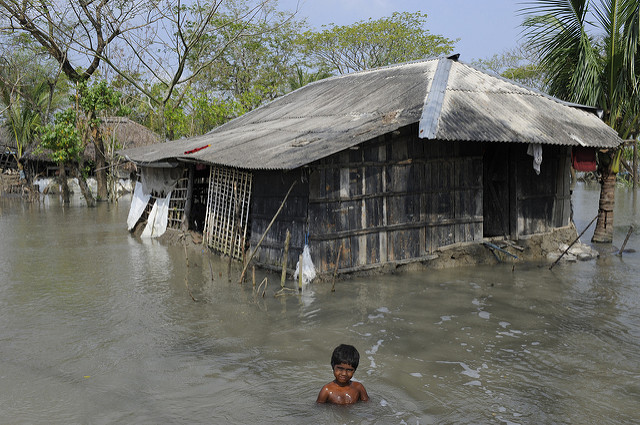 Photo Credit: Flickr User: DFID
Photo Credit: Flickr User: DFID
Climate Security: Where Is Most Vulnerable?
Climate security is a growing and often, misunderstood field. While many people lump it into the climate change field, climate security involves equal parts “climate” and “security”. Climate security is not just about melting ice in the Arctic and floods in Bangladesh. Rather, to use the Bangladesh example, it is about, how increasing floods will impact the security of those communities, both civilian and military, that live in the region. While assessing predicted changes in climate is important, I would argue that the knock-on effects of those changes is the real concern. How will climatic changes impact local jobs and economies? How will warmer temperatures impact the rates and routes of migrating populations? Where will island communities move to when their homes disappear under the sea? These are just a few of the many questions climate security tries to answer.
In order to answer these questions, there needs to be a significant increase in the ability to assess and analyze potentially vulnerable regions. The Complex Emergencies and Political Stabilization in Asia (CEPSA) based at University of Texas at Austin, recently launched an impressive new Climate Security Vulnerability Model which evaluates climate security at the subnational level. The model integrates climate vulnerability with population density, local resiliency, and governance/political violence in order to provide an overall evaluation of the region. The model results suggest that within South Asia, “much of Bangladesh, parts of southern Myanmar, and parts of southern and northwestern Pakistan are the most vulnerable locations from a climate security perspective.”
While this model focuses on South Asia, the same concept could (and has) been applied to other regions throughout the world. Joshua Busby, Assistant Professor at the University of Texas-Austin, provided a thought provoking analysis through a journal article in MIT Press Journal and a presentation at the Woodrow Wilson Center on climate and vulnerability in Africa.
Comprehensive modeling is the first step in building resiliency to future impacts. The CEPSA model is not designed to provide solutions, but by understanding how climate and security variables interact, countries gain foresight into where instability may arise. To access the model in full, check out the Climate Security Vulnerability Model.
For general information on climate security and its implications, check out ASP’s Climate Change and Global Security page. In addition, ASP has developed analysis of international and national security threats, The Global Security Defense Index and the Pay Now, Pay Later state-by-state assessment of the costs of climate change.





